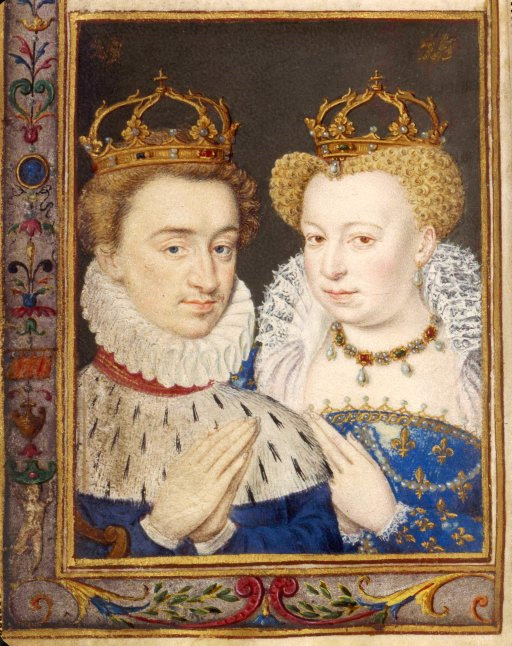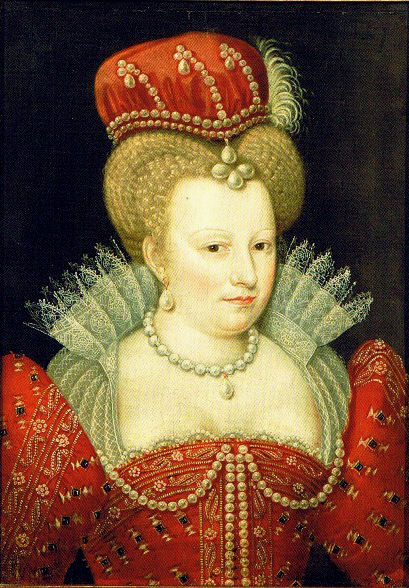
On the 18th of August 1572, a fateful wedding took place in Paris, France. King Henri III of Navarre, a Huguenot monarch and the future Henri IV of France, married Princess Marguerite de Valois. Henri was the only surviving son of Jeanne d’Albret, or Queen Jeanne III of Navarre, and her husband – Antoine de Bourbon, Duke de Vendôme. A Valois princess, Marguerite was a daughter of King Henri II of France and his wife, Queen Catherine de’ Medici. Both born in 1553 with the difference of approximately 7 months, the spouses were 19 years old at the time.
In the 16th-century, France was a place of indescribable turmoil and uncertainty. Years of the Habsburg-Valois wars in Italy depleted the royal treasury and created an unbalanced situation in the country. Because of the Reformation in Europe, France evolved into a powder keg filled with religious tensions to the brim, for the country was on the brink of an all-out civil war between the Catholics and the Huguenots. In the midst of all of these problems, the Valois dynasty struggled to keep its power in the country, already battered by the tragic demise of King Henri II in a bizarre jousting accident and the death of the sickly and weak King François II. The ascension of the next monarch – Charles IX – meant the beginning of the unofficial rule of the formidable Queen Mother – Catherine de’ Medici – at first during Charles’ minority and then from the shadows.
Years ago, King François I of France had brought a great revival of art and classical learning to his kingdom and established royal professorships in Paris and other cities, investing in education and all things progressive and intellectual, which equipped people with the knowledge necessary to understand cultural and religious texts. France had followed the policy of religious tolerance, and the Protestants, who had not yet formed an organized movement, had not been persecuted, save after the Affair of the Placards of 1534. The Renaissance humanism had been spreading, leading to the studies and reconstruction of secular Greek and Latin texts, as well as the reading, analysis, and translation of many religious books, including the Old and New Testaments. As a result, the class of reformers who were dissatisfied with the corruption within the Catholic Church emerged.
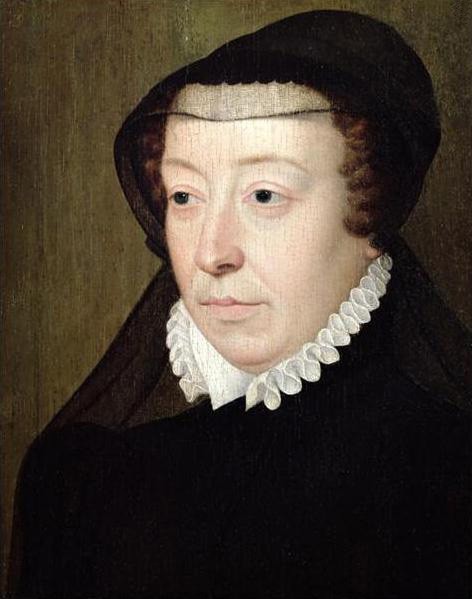
The Protestant ideas made a stronger impact on the lower classes of society, yet Calvinism developed with support from the nobility. In about 1560, François I’s niece, daughter of his sister Marguerite – Jeanne d’Albret – had converted to Calvinism, while her husband, Antoine, had initially supported her views. Their son, Henri, had been raised as a Protestant. A French prince of the blood – Louis de Bourbon, Prince de Condé – declared himself a Huguenot leader. After Henry II’s demise, a political vacuum emerged in which opposing factions, eager to grab more power, functioned. After the Amboise conspiracy of 1560 when François II could have been kidnapped to eliminate the Guise influence on the young king, the House of Guise, his relatives through his marriage to Mary Queen of Scots, manipulated him into signing hundreds of death warrants for suspected plotters – most of them non-Catholics. By this time, the term ‘Huguenot’ was widespread in use in the country.
The first cases of Protestant iconoclasm, linked with the destruction of images and statues in Catholic churches, happened in Rouen, La Rochelle, and other cities in 1560-1561. The Catholics retaliated and attacked the Protestants in Sens, Cahors, Tours, Carcassonne, and numerous cities. After François II’s passing, Catherine de’ Medici came to power as regent for her son, Charles IX, with the main goal to preserve the independence of the Valois throne in the highly turbulent times. Catherine had to maneuver between the Houses of Bourbon and of Guise. Although she was a Catholic, her Chancellor Michel de l’Hôpital implemented a number of compromising measures. Striving to heal the religious strife in the country, the Edict of Saint-Germain of 1562 provided limited tolerance to the Huguenots in the Roman Catholic realm.
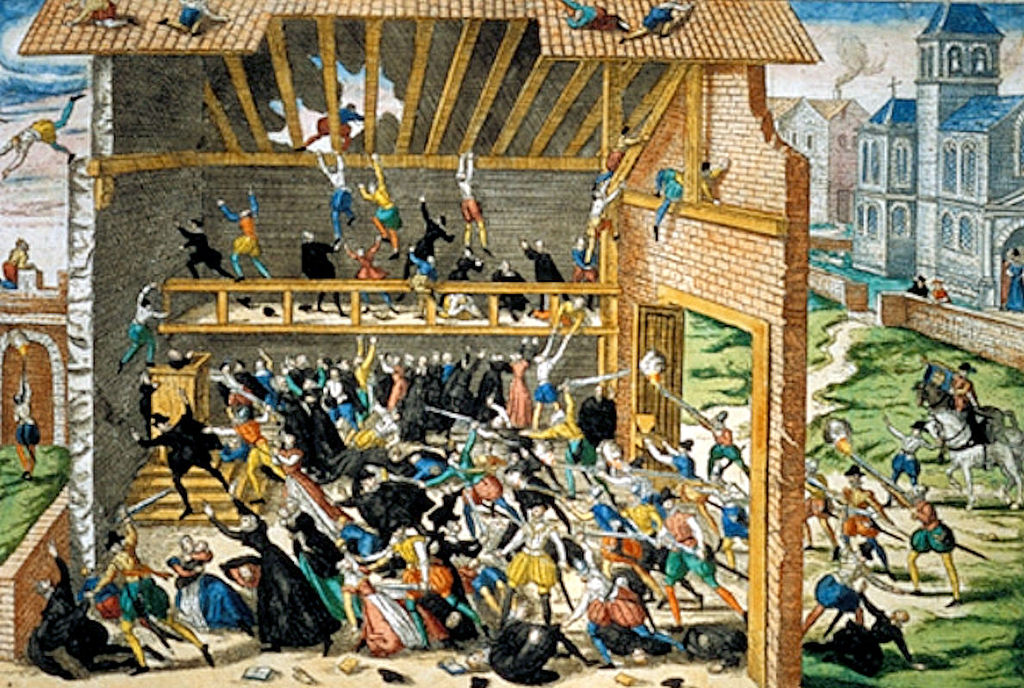
Despite Catherine’s good intentions, the country was so religiously divided that even this edict did not lessen the existing frictions. The massacre of Vassy, initiated by the Guise faction in 1562, led to the First Religious War of 1562–1563, which ended with Catherine’s concessions. The Edict of Amboise of 1563, or the Edict of Pacification, restored peace and guaranteed the religious privileges and freedoms for the Huguenots. However, the House of Guise and their supporters were dissatisfied with the situation and harshly criticized the document. At this stage, Catherine and her councilors still tried to pacify all the parties, and the Queen Mother met with the Huguenot Jeanne of Navarre several times for negotiations. At the same time, the Huguenot leaders established an alliance with Queen Elizabeth I of England when the Treaty of Hampton Court of 1562 was signed. The Second War lasted from 1567 and 1568, ending with the reiteration of the Edict of Amboise.
The Catholic league, headed by the Guises, killed hundreds of the Huguenots throughout the summer of 1568. Their leaders – Prince de Condé and Gaspard de Coligny, Seigneur de Châtillon – fled from the royal court. Soon the Edict of Amboise was revoked, and the Third Religious War commenced when the Huguenots assembled a large army under the command of Prince de Condé. They attacked the Catholic troops led by Henri de Valois, Duke d’Anjou (later King Henry III). Catherine also received the aid of soldiers from Spain, the Papal States, and the Grand Duchy of Tuscany. The Huguenots were joined by the Protestant militias from Germany. The Protestant army besieged several cities in the Poitou and Saintonge provinces, Angoulême and Cognac. Prince de Condé was killed at the Battle of Jarnac, and Admiral de Coligny assumed command of the Protestant forces. Jeanne d’Albert was openly proclaiming her teenaged son, Henri of Navarre, as the leader of the Huguenot movement in France. The deceased Prince de Conde’s heir was his eldest son – Henri de Bourbon, Prince de Condé – who was also declared their leader.
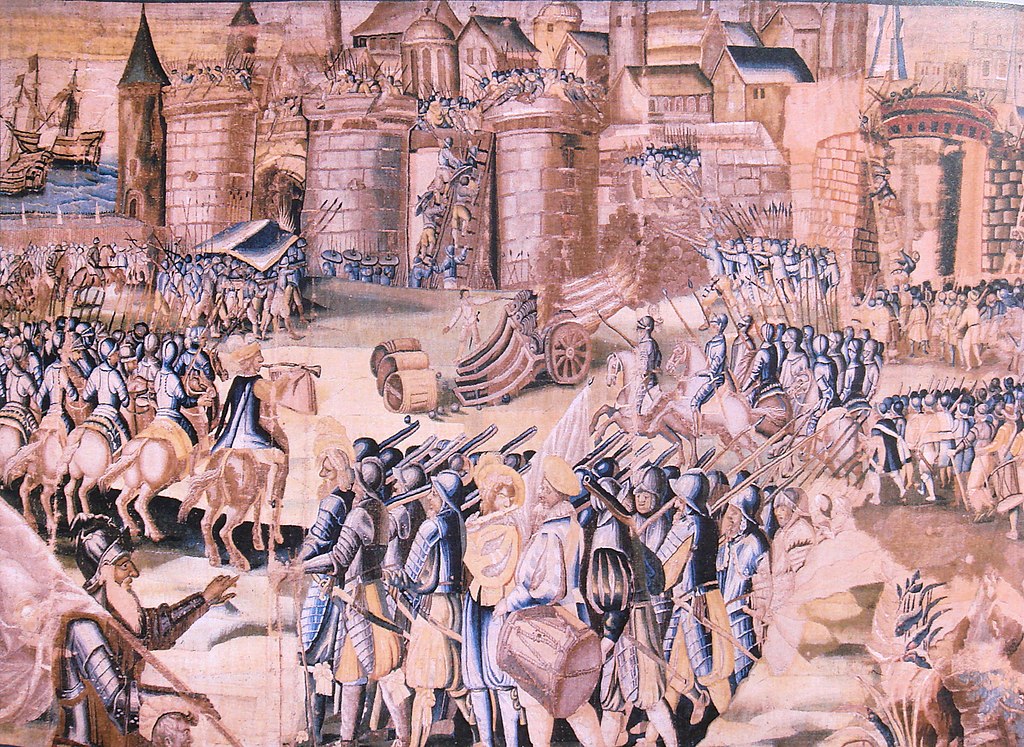

As the amount of royal debt skyrocketed, Catherine found it impossible to finance the armies. The Peace of Saint-Germain-en-Laye of 1570, negotiated by Jeanne and Catherine in person, restored some concessions to the Huguenots. The Protestants were permitted to hold public office in France, and Catherine consented to give her daughter, Marguerite, in marriage to Henri. Jeanne passed away a few months before the wedding, and her son succeeded her as the King of Navarre. The mixed-faith marriage, which was controversial in the minds of the Huguenots and the Catholics, took place at Notre Dame Cathedral in Paris. At first glance, it seems that it was Catherine’s another attempt to reconcile the religious factions, yet it could have masked the already existing intentions of the Queen Mother and Charles IX to rid of the Huguenot leaders, including Gaspard de Coligny and other non-Catholics. Whether Catherine planned this spectacle in advance or not remains a mystery, but a ruthless, clever, and calculative woman such as herself could have done so.
Was Marguerite forced into marrying her distant cousin, Henri of Navarre? At the time of their wedding, it was believed that her mother, who had engineered this wedding with Jeanne, could have compelled Margot to wed Henri. The importance of Marguerite’s role in French affairs is often ignored, and there is a scarcity of reliable information about her, for her reputation was slandered. Since her father had died when she was only about 7, Marguerite was raised by her mother, with whom she had much in common: inner strength, boldness, intelligence, stubbornness, political acumen, as well as love for culture and learning. Historians disagree over whether Margot strongly resisted her marriage to Henri de Bourbon. Nevertheless, she may have held some ill will towards her relatives for the selection of her husband, in particular if the rumour about her affair with and love fo Henri I, Prince of Joinville and Duke de Guise, were true.
In her Memoirs years later after the wedding, Marguerite wrote:
“I was set out in the most royal manner. I wore a crown on my head with the coët, or regal close dress of ermine, and I blazed in diamonds. My blue-colored robe had a train to it of four ells in length, which was supported by three princesses. A platform had been raised, some height from the ground, which led from the Bishop’s palace to the Church of Notre-Dame. It was huge with cloth of gold; and below it stood the people in throngs to view the procession, stifling with heat. We were received at the church door by the Cardinal de Bourbon, who officiated for that day, and pronounced the nuptial benediction. After this we proceeded on the same platform to the tribune which separates the nave from the choir, where was a double staircase, one leading into the choir, the other through the nave to the church door. The King of Navarre passed by the latter and went out of church.”
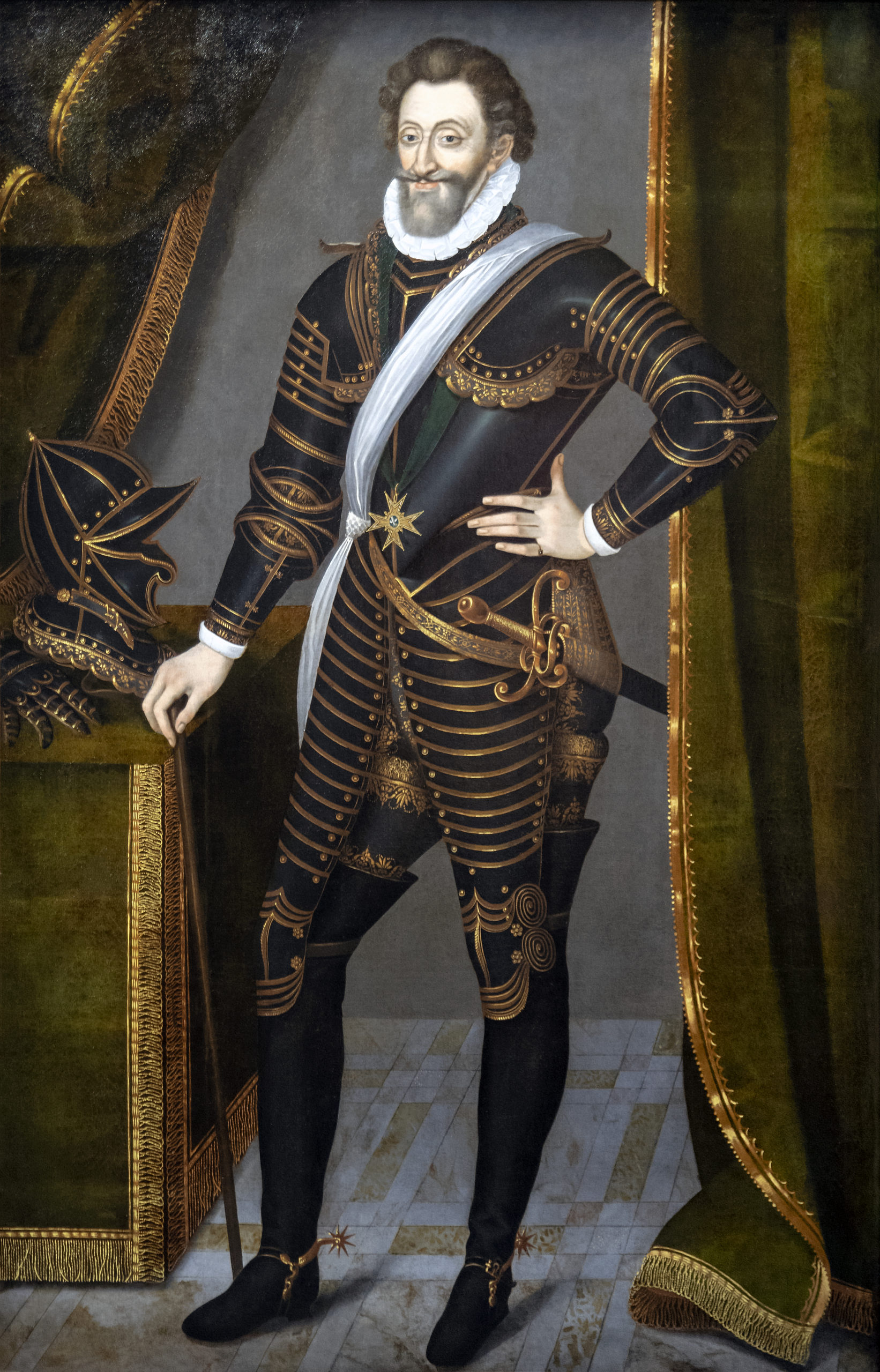
Margot seemed not to have been a virgin at the time of her marriage, but it cannot be proved, for we don’t know when she started taking lovers. The stories of her horribly promiscuous lifestyle might have been severely embellished with the purpose of maligning her. The 17-th century French historian, François Eudes de Mézeray, later devised the anecdote that Charles IX pushed down his sister’s head during the ceremony as though she nodded her consent. Yet, this could have been part of the Bourbon propaganda in subsequent years to justify the annulment of this childless union. Nonetheless, it is more than likely that the couple considered themselves incompatible.
A tall girl with alabaster skin, Marguerite was a stunning blonde beauty, although her hair was reportedly naturally dark, but she colored it. The glamour of the Valois princess looked incongruent with the appearance of agile and short Henri, who was unkempt by Valois standards. Marguerite, who had embraced the Renaissance cultural refinement since her early childhood at the glittering Valois court, had little in common with Henri, who even in later years was not interested in the arts. Perhaps she discerned Henri’s rampant sexuality, for he must already have been attracted to pretty females; next to Marguerite, he was not a fashion icon. He was an earthy man with usual interests, while she was a sophisticate with carnal desires, but with far wider interests.
Pierre de Bourdeille, Seigneur de Brantôme (known as the Abbé de Brantôme) hailed Margot. This famous French historian, soldier, and biographer claimed that Marguerite de Valois was the most beautiful woman in the world. However, Henri seemed not to have been his wife’s admirer, although he must have appreciated her loveliness as a womanizer eager for amorous conquests. Jeanne d’Albert, his mother, was not impressed with the Valois princess and wrote of her:
“As for her beauty, I agree she [Marguerite] has a good figure but she holds herself in too much. As for her face, she uses so much help, it does irritate me, because she will ruin herself. But in this court make-up is normal just like in Spain.”
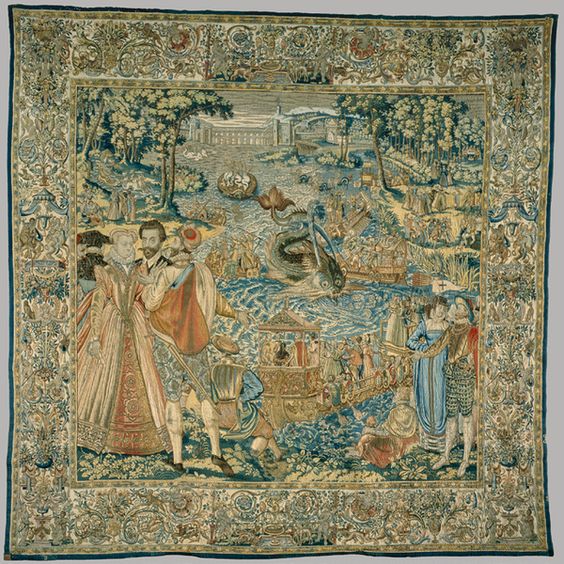
Regardless of their sentiments, Henri and Marguerite became spouses. Their matrimony was seen as a power marriage due to the two religions involved, symbolizing compromise. Thousands of the French Huguenots arrived in Paris for the wedding of their leader in the late summer of 1572. None of them suspected that only 6 days after the wedding, on the St Bartholomew’s Day, the most horrible massacre of the non-Catholics would occur in Paris and then in other cities. Catherine de’ Medici could have persuaded Charles IX, who was getting quite mentally unstable, to perpetrate the massacre, or the monarch could have ordered it himself. Yet, given Catherine’s dominance in the Valois family, she held Charles in her tight grasp, and it is difficult to imagine that she knew nothing about the Guises’ baleful intentions and the planned massacre.
All images are in the public domain.
Text © 2020 Olivia Longueville

